
Coopers Hawk Pictures
Accipiter cooperi
We hope you enjoy these Cooper's Hawk pictures that we have taken while researching raptor migration.
Click on thumbnails below to see larger photos, but please note the Terms of Use.
Age Characteristics of Cooper's Hawk in Photos
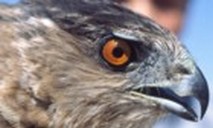
The first photo is an adult male that is at least two years old (After Second Year - ASY).
The picture shows the typical eye color of an adult Cooper's Hawk and the prominant superorbital ridge that protects the eyes as they crash through trees and shrubs while chasing prey.
Some people think the superorbital ridge also makes them look "mean". We think it makes them look cool.
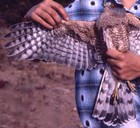
This is another adult Cooper's Hawk showing typical characteristics; rufous and white barring on the breast, the dark red eye of an adult, the dark cap (darker than the nape), and wide whitish terminal band on the tail and "flat top" head.

The next photo is an adult male that is just over one year old.
If you notice, one of the feathers at the tip of the left wing (called
primaries) is a new growing feather. (8th primary or 3rd feather from the end).
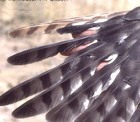
This photo shows a closer view of the molting primaries.
Notice, that primary feathers 1-8 have been replaced with new, darker feathers, while primaries 9 and 10 (last two) are still the faded brown (older)juvenile feathers that have not yet been replaced.
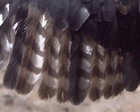
This photo is a closer view of the secondary feathers that also show some older, faded brown juvenile feathers that have not yet been replaced and the new, darker, basic feathers that have replaced older feathers that have already molted.
The video shows an adult Cooper's Hawks feeding young in the nest.
Related Bird of Prey Pages:
More Cooper's Hawk Information
Sharp-shinned Hawk vs. Cooper's Hawk
|
Our Favorite Bird Watching Binoculars, Squirrel-Proof Feeder & Hummingbird Feeder Read Our Reviews: |
||
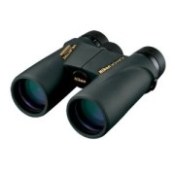
Nikon Monarch M5
Best mid-priced bird watching binoculars. Waterproof, shockproof, multi-coated ED-Glass. |
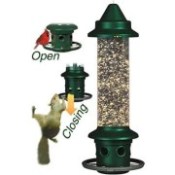
|
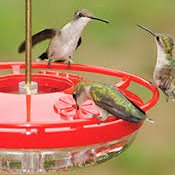
Best Hummingbird Feeder
Drip-Free, Ant-moat, Durable, Easy to Fill and Clean. |
| Click Images or Links To View More Info | ||